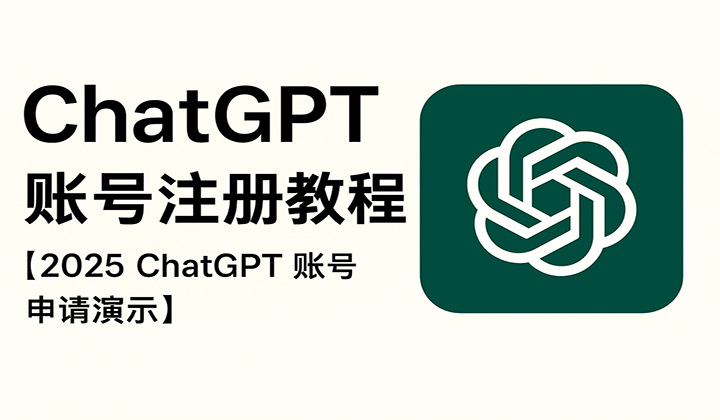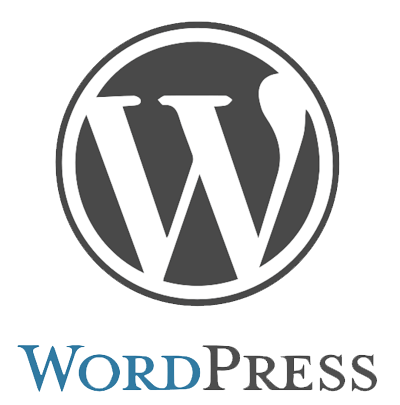Preferred Open Source CMS for Overseas Independent Sites: WordPress

Among the many open-source website building systems, WordPress has become the first choice for building overseas independent sites thanks to its mature technical foundation and vast ecosystem. As the CMS (Content Management System) with the highest global market share, WordPress has long held the top spot among website building systems—not simply because of its large user base, but due to its highly flexible and controllable technical architecture.
The open-source nature of WordPress is its core advantage. It means developers can truly control the source code, deploy freely, and maintain independently, thereby creating a site completely independent of third-party platforms. This "decentralized" deployment approach is exactly the fundamental prerequisite required by overseas independent sites. Meanwhile, the rich variety of themes in the WordPress ecosystem makes it easy to quickly build attractive site interfaces, greatly reducing design and development costs. The diversity and extensibility of plugins support everything from basic showcase sites to multilingual, multichannel cross-border e-commerce platforms.
Whether it’s the agile launch pursued by a startup brand, or the sustainable scalability considered by an established enterprise, WordPress provides a powerful, open, and vibrant website building solution that offers stable technical support and a wide range of application scenarios for the development of overseas independent sites.
When creating this article, the author positioned it as a system selection guide for overseas independent site building rather than a deep technical tutorial. Therefore, the length and reading time of this article will not be too long. To help readers save time, a table of contents is specially provided in the list below so readers can flexibly choose the chapters they need to read, simply by clicking the titles in the directory to jump to the corresponding content.
- WordPress History
- WordPress.com and WordPress.org
- Advantages of Building Overseas Independent Sites with WordPress
- How WordPress Enables an E-commerce System
一、The History of WordPress

WordPress was originally created in 2003 by Matt Mullenweg and Mike Little, with the initial goal of building a simple and easy-to-use personal blogging platform. After more than twenty years of development, WordPress has evolved from a blogging tool into the world’s most popular open-source content management system (CMS). To date, WordPress has undergone dozens of major versions and hundreds of minor updates, continuously optimizing security, performance, and user experience, while also expanding its application scenarios to enterprise websites, news portals, educational platforms, and even e-commerce malls.
According to incomplete statistics, there are currently more than 10,000 themes available for WordPress websites, and the number of plugins exceeds 100,000, covering nearly all necessary website functionalities—from SEO optimization, data analysis, and form building, to e-commerce features, logistics integration, and payment systems. This vast and continuously updated ecosystem gives WordPress a high degree of extensibility and ongoing innovation capability.
For users wishing to build independent e-commerce websites, WordPress not only offers a mature and stable website framework but also, through e-commerce plugins like WooCommerce, provides a complete e-commerce functional chain—from product display, shopping cart, order management to payment settlement—greatly reducing technical barriers and launch costs.
二、WordPress.com and WordPress.org

Many beginners who first encounter WordPress often face a confusing question: Why do two different official websites appear when searching for “WordPress”? One is the blue-and-white logo site WordPress.com, and the other is the black-and-white logo site WordPress.org. Although their names look almost the same, they actually represent two completely different product forms and usage models.
If you lack relevant website building experience or do not fully understand the difference between open-source software and SaaS services, it is easy to feel confused at the initial stage. Especially when building an e-commerce site, choosing the wrong version may directly affect your future freedom and ability to extend functionality. Therefore, correctly distinguishing between WordPress.com and WordPress.org is the first step toward professional website building.
WordPress.com: A Managed Service Platform for Beginners
WordPress.com is a one-stop blog and website hosting platform provided by Automattic. It is a typical SaaS (Software as a Service) product. Users only need to register an account to quickly launch a site on its servers, which includes hosting space, backend management, some free theme templates, and basic features.
Although WordPress.com is very friendly to users who don’t know how to code and want to quickly publish content, it has many limitations regarding functional expansion, custom design, and code access. Many plugins cannot be freely installed, custom themes are restricted, and e-commerce functions such as WooCommerce require additional payment upgrades to business plans or above to unlock.
WordPress.org: A Truly Open-Source Website Building System
Unlike WordPress.com, WordPress.org provides the open-source version of the WordPress program itself, which you can download for free and freely deploy on your own server. This self-hosted website building method means you have full control over your site: you can install plugins at will, upload themes, modify code, and even build WordPress into a fully functional store system, such as combining with WooCommerce to create a multilingual, multi-currency, multi-payment cross-border e-commerce platform.
For users planning to operate an overseas store website long-term, WordPress.org is a more flexible, professional, and growth-oriented choice. Although it requires some website-building technical skills or team support, its openness and autonomy are precisely the key advantages of an independent site.
Through the above explanation of their attributes and positioning, we can understand that WordPress.com is more like a “service platform,” suitable for personal blogs or beginners who are not tech-savvy; whereas WordPress.org is a true “website building tool,” suitable for store projects that require deep customization, freedom to expand, and growth goals. Although both come from the same company—Automattic—they represent completely different website-building philosophies and levels of freedom in actual use.
三、Advantages of Using WordPress to Build Overseas Independent Sites

Among many website building methods, WordPress is widely used globally for building overseas independent sites not only because of its mature technology and vast ecosystem but also because it grants website operators true autonomy. Whether from the perspective of intellectual property ownership, flexibility of function customization, or the level of support from the development community, WordPress has irreplaceable comprehensive advantages.
WordPress is currently one of the few website building systems on the market that comprehensively balances four major dimensions: autonomy, scalability, maturity, and support. Because of this, it has become the preferred platform for countless brands building overseas independent sites, and it serves as a solid technical foundation supporting long-term e-commerce business development. Next, I will analyze in detail the advantages of using WordPress to build overseas independent sites from four core dimensions.
Source Code Autonomy, True Ownership
Using the WordPress.org version to build a website means you have complete control over the website’s source code and server resources. Unlike various SaaS website building platforms, self-hosting a WordPress independent site is not affected by platform policy changes and does not risk site closure or data loss due to service provider adjustments. This ability to fully control the website is the foundation for any long-term independent site operation and the core guarantee for brand data assets.
Powerful Ecosystem, Rapid Construction and Flexible Expansion
WordPress has one of the largest website building ecosystems globally. Whether you need a content presentation website, a brand official site, or a fully functional cross-border e-commerce platform, you can quickly build it by combining tens of thousands of themes and plugins. Especially the WooCommerce plugin system, which has formed a complete mature e-commerce solution supporting multilingual, multi-currency, logistics integration, payment gateways, and other functions, adapting to various overseas sales scenarios.
At the same time, WordPress supports a high degree of secondary development. Whether it is design customization, interface development, or deep modification of functional logic, all can be implemented on the code level to meet the operational needs of different stages.
Active Community, Abundant Resources
As the most widely used CMS globally, WordPress has a massive community of developers and users. Almost all common issues can be found with detailed answers in official documentation, technical blogs, community forums, and YouTube tutorials. For developers, this transparency and accessibility of information greatly lower the learning and development threshold and also means that when your independent site project encounters problems, you can almost always find solutions.
Open-Source Freedom, Fully Customizable System and E-commerce Functions
WordPress itself is open source, meaning you can fully customize the system according to your project needs. From the front-end interface to back-end management, from data structures to user flows, and integration with third-party systems (such as ERP, CRM, logistics providers interfaces, etc.), there are no platform restrictions. WooCommerce, as its e-commerce plugin, is also open source and can be deeply customized for store business, creating an overseas e-commerce independent site that truly fits business needs.
四、 How WordPress Implements an E-commerce System

Among WordPress's broad application scenarios, e-commerce functionality is undoubtedly one of its most extensible parts. With the continuous development of WordPress, an e-commerce plugin called WooCommerce emerged and quickly became the core component for WordPress to realize an e-commerce system. Although WooCommerce is commonly called a "plugin," its functional depth and completeness have long surpassed the general meaning of a plugin; more accurately, it is a fully functional e-commerce system with an independent and active technical ecosystem.
The e-commerce system built by WordPress combined with WooCommerce not only meets the online sales needs of general small and medium-sized businesses but also, due to its open-source, flexible, and highly customizable nature, provides a cost-effective solution for users wishing to expand overseas markets and build their own store brands.
WooCommerce: Injecting Complete E-commerce Capabilities into WordPress
WooCommerce is an e-commerce solution developed by the Automattic team with a high degree of integration with WordPress. By installing WooCommerce, users can equip their WordPress website with a complete set of e-commerce functions from product display, shopping cart system, order management, inventory control, logistics integration to online payment. This expansion method allows WordPress to be more than just a content management system; it gains the capability to operate a professional e-commerce platform.
For users familiar with SaaS e-commerce platforms like Shopify, WooCommerce offers an even more flexible experience. It can realize most core features of Shopify and, due to its open-source nature, can deeply customize front-end styles, product logic, user flows, and even integrate with enterprise systems such as ERP and CRM. This flexibility is exactly why many medium and large cross-border e-commerce teams ultimately choose WordPress + WooCommerce.
Installation and Configuration: A Quick-Start E-commerce System
In practical operation, installing WooCommerce is very simple. Just go to the plugin directory in the WordPress backend, search for “WooCommerce,” click “Install” and activate it. After the first activation, the system will guide users through basic configuration, including store address, currency settings, payment methods, logistics and shipping options, etc. WooCommerce’s guided setup process is very friendly for beginners, allowing a basic e-commerce site framework to be completed in just a few minutes.
Afterwards, users can enter the product management interface to freely add product information, set inventory, define product categories and tags, and can further install plugins that support multilingual, multi-currency, sales analysis, membership systems, and other features as needed, allowing the site to continuously evolve and adapt to more complex business requirements.
Unlimited Possibilities Brought by the Open-Source Ecosystem
WooCommerce also has an active ecosystem. Whether it is payment gateways (such as Stripe, PayPal, credit card interfaces), logistics plugins (such as DHL, UPS, SF Express), membership systems, subscription services, or various marketing tools (such as coupons, bundled sales, points systems), all can be easily realized through the plugin ecosystem. Additionally, for overseas market needs, WooCommerce supports multilingual, multi-currency, tax settings, settlement rules, and other diverse scenarios, truly achieving “on-demand combination, free expansion.”
Conclusion
With the acceleration of global brand overseas expansion trends, independent sites have become important battlegrounds for enterprises to expand overseas markets, build private traffic, and shape brand recognition. Among many website building solutions, WordPress, with its open-source autonomy, rich ecosystem, and flexible extensibility, has become the ideal choice for building overseas independent sites. Whether you are a startup entrepreneur or a mature enterprise seeking to reduce costs and increase efficiency, WordPress can provide a highly flexible and sustainably extensible website building technology framework.
We hope this systematic introduction can help you better understand the value of WordPress in independent site construction and provide a clear technical direction for your overseas business. Next, you can select suitable themes and plugins based on your needs to gradually build a truly global e-commerce website of your own.
Finally, if you have higher requirements for the design and development quality of overseas independent sites and want to save a lot of learning and practice time, planning to entrust the project to an experienced professional team for efficient completion, you are welcome to contact Logic Digital Technology. We will tailor an independent site solution that fits overseas user experience based on your brand positioning and market goals, ensuring a high degree of coordination in design visuals, technical implementation, and marketing functions, helping your overseas business land steadily and grow continuously.
This article is copyrighted by Logic Digital Technology (SZLOGIC) . Personal sharing and learning are welcome. Unauthorized use for any commercial purposes or reproduction of this article is strictly prohibited.


























